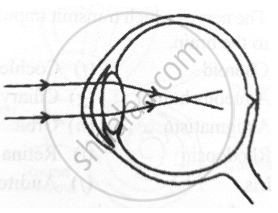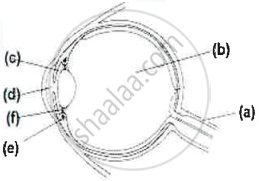Advertisements
Advertisements
प्रश्न
Define the following:
Power of accommodation
उत्तर
APPEARS IN
संबंधित प्रश्न
Define the term.
Power of accommodation of the eye.
Distinguish between: aqueous humor and vitreous humor
Which. of the following has normal vision?
(a) Xc Xc
(b) Xc Y
(c) XC Xc
(d) Xc Yc
Night birds have ______ cones than rods in their eyes.
Name the part of the eye:
which controls the amount of light entering the eye.
Name the part of the eye:
which changes the focal length of eye-lens.
Where is the image formed in a human eye?
What is the least distance of distinct vision for a normal human eye?
What is the range of vision of a normal human eye?
Define the term "power of accommodation" of human eye.
Which parts of the eye cause rays of light to converge on the retina?
Five persons A, B, C, D and E have diabetes, leukaemia, asthma, meningitis and hepatitis, respectively.
Which of these persons can donate eyes?
Give the main function of the following:
Three semicircular canals
Mention, if the following statement is True or False
Rods are responsible for vision in the dark
The image of an object at an infinite distance is obtained in a real and erect form through a convex magnifying glass.
The black opening between the aqueous humour and the lens is called ____________.
Given below is a diagram depicting a defect of the human eye. Answer the questions that follow:

- Give the scientific term for the defect.
- Mention one possible reason for the defect.
- What type of lens can be used to correct the defect?
Given below is a cross section of the human eye. Match the structures marked (a) to (e) with their correct functions:
Example: (f) - 6. Holds the lens in position
| Cross section of Human Eye | Functions | |
 |
1. | Protects retina |
| 2. | Regulates the size of the pupil | |
| 3. | Alters the shape of the lens | |
| 4. | Keeps the lens moist | |
| 5. | Transmits nerve impulses to brain | |
| 6. | Holds the lens in position |
Which of the following is responsible for the adjustment of the size of pupil?
Differentiate between members of the following pair with reference to what is asked in the bracket.
Aqueous humour and vitreous humour (location).
